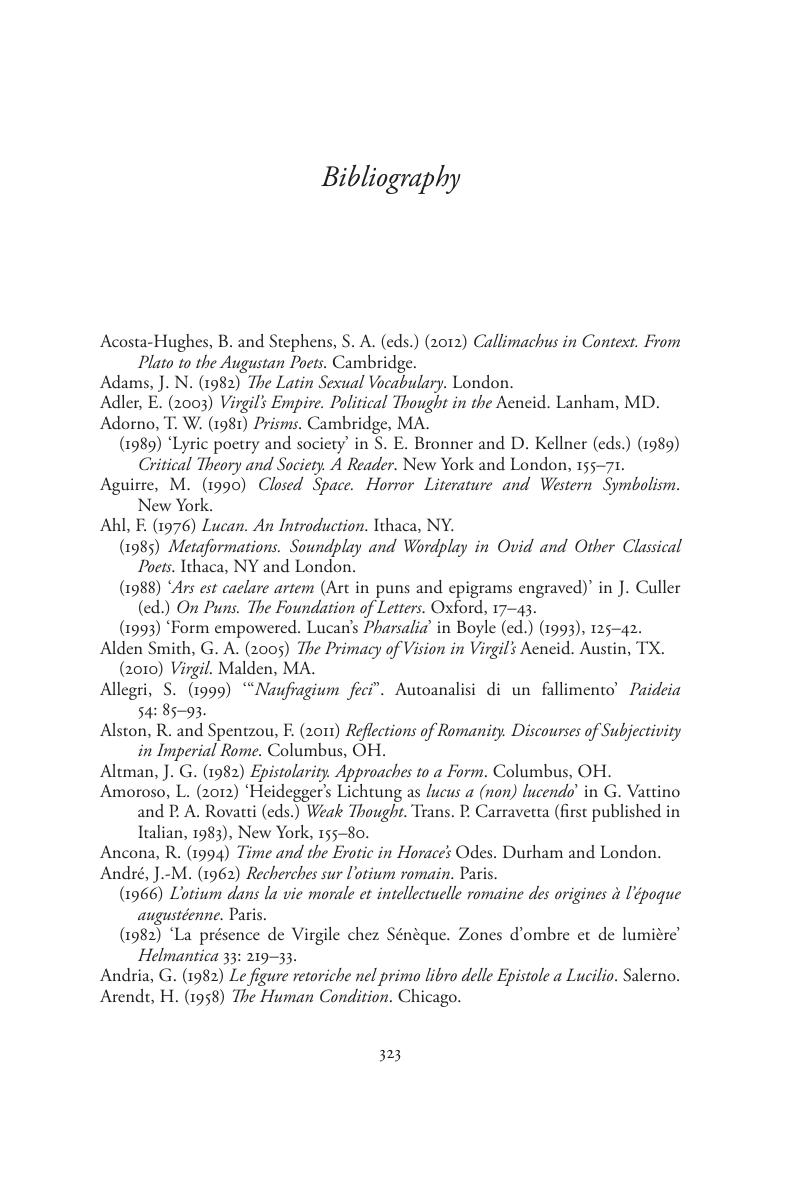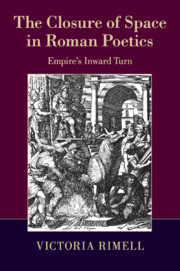Book contents
- The Closure of Space in Roman Poetics
- THE W. B. STANFORD MEMORIAL LECTURES
- The Closure of Space in Roman Poetics
- Copyright page
- Dedication
- Contents
- Figures
- Acknowledgements
- Note on texts, translations and abbreviations
- Introduction
- Chapter 1 Empire without end
- Chapter 2 All four corners of the world
- Chapter 3 Roman philosophy and the house of being
- Chapter 4 Blood, sweat and fears in the Roman baths
- Chapter 5 Imperial enclosure, epic spectacle
- Chapter 6 The homeless problem
- Bibliography
- Index locorum
- Subject index
- References
Bibliography
Published online by Cambridge University Press: 05 June 2015
- The Closure of Space in Roman Poetics
- THE W. B. STANFORD MEMORIAL LECTURES
- The Closure of Space in Roman Poetics
- Copyright page
- Dedication
- Contents
- Figures
- Acknowledgements
- Note on texts, translations and abbreviations
- Introduction
- Chapter 1 Empire without end
- Chapter 2 All four corners of the world
- Chapter 3 Roman philosophy and the house of being
- Chapter 4 Blood, sweat and fears in the Roman baths
- Chapter 5 Imperial enclosure, epic spectacle
- Chapter 6 The homeless problem
- Bibliography
- Index locorum
- Subject index
- References
Summary

- Type
- Chapter
- Information
- The Closure of Space in Roman PoeticsEmpire's Inward Turn, pp. 323 - 347Publisher: Cambridge University PressPrint publication year: 2015



